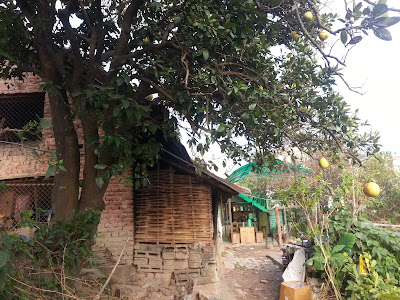Manisoba Fukuoka was a Japanese farmer who, over the course of thirty years, developed a style of natural farming. Fukuoka's philosophy is that of no-till agriculture, with minimal human interference. Tilling the soil, he said, disrupts the natural ecosystems and organisms which sustain it, and creates a cycle which people then have to continue to always plow. Nature is perfect in the way it operates, and trying to change or "improve" it only creates more labor in the end. So Fukuoka's style involves scattering seeds on top of un-tilled fields, the propagation of wild vegetables, and minimal to no weeding (and in fact rethinking all-together the idea of what a "weed" is). Fukuoka wrote many books, most popularly One Straw Revolution, which I highly recommend to everyone, regardless of their interest in agriculture.
After learning of Fukuoka, and coming from a quite progressive farming family himself, Maki sought to prove the concept of natural farming. More than that, he wants to show that it's possible for anyone to live self-sufficiently and sustainably off of the land. In order to really prove that everyone can live this way, he chose the worst possible piece of land to work (seriously the worst land I've ever seen: horribly depleted, super heavy soil, and almost constantly in a state of drought.
Maki has an orchard, grows grains, and vegetables (though he's slowly weaning himself off of annuals). Walking through his orchard is like walking through a terraced forest. Because of the unique climate of the Nepali mid-hills, you'll find avocado, apple, and citrus on the same terrace.
This year, Maki hopes to be completely food self sufficient, the last piece of the puzzle being cooking oil (and salt, which will always have to be bought...). This was filled by nijier, a local wild plant whose seeds are quite fatty, and can make for good oil.
Going forward, Maki hopes to gradually move towards complete self-sufficiency. Next season he's growing cotton for clothes, and we just finished making enough soap for at least a year. Maki recognizes that it took Fukuoka thirty years to perfect his method, so he knows that he is in this for the long haul.
 |
| Nijier seeds drying, after we harvested, threshed, and winnowed it |
 |
| Maki's house, which, since he does not believe in employing people, he built himself |























































